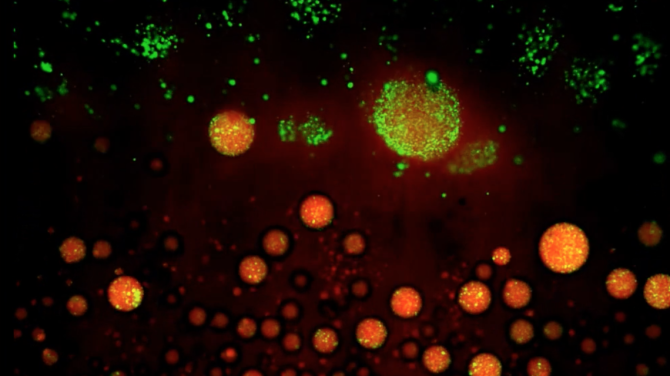News directly from Cornell's colleges and centers
Droplets swim to dissolution, could inspire fluid microbots
By Syl Kacapyr
Researchers discovered that microscopic liquid droplets swim toward solvent conditions that favor their dissolution. This mechanism may underlie some transport processes within living cells, and could be exploited to develop fluid micro robots.
The research was published May 9 in Nature Communications by senior author Eric Dufresne, professor of materials science and engineering at Cornell Engineering and of physics in the College of Arts and Sciences. The lead author is Etienne Jambon-Puillet, a researcher at École Polytechnique and a former member of Dufresne’s Laboratory of Soft and Living Materials.
Working with model bovine serum albumin (BSA) condensates, the research team showed that the droplets swim along chemical gradients. When the droplets are loaded with an enzyme, they can produce their own gradients, and swim toward each other, according to the journal paper.
“We noticed that chemicals inducing Marangoni swimming are also impacting the mixture stability. They shift the critical point of the system and thus the composition of each phase, at equilibrium,” Jambon-Puillet said in a tweet announcing the research. “Chemicals favoring mixing reduce the composition difference between dense and dilute phase and thus the interfacial tension.”
In all these cases, the researchers observed the droplets swimming toward solvent conditions that favor their dissolution, a behavior they call “dialytaxis,” which they expect to be generic and should apply to any macromolecular phase-separated system.
“We’ve found a powerful mechanism to move things around at tiny scales. We are looking at natural systems to understand how it could impact cellular physiology, and developing synthetic systems to autonomously execute tasks,” Dufresne said.
Media Contact
Get Cornell news delivered right to your inbox.
Subscribe

